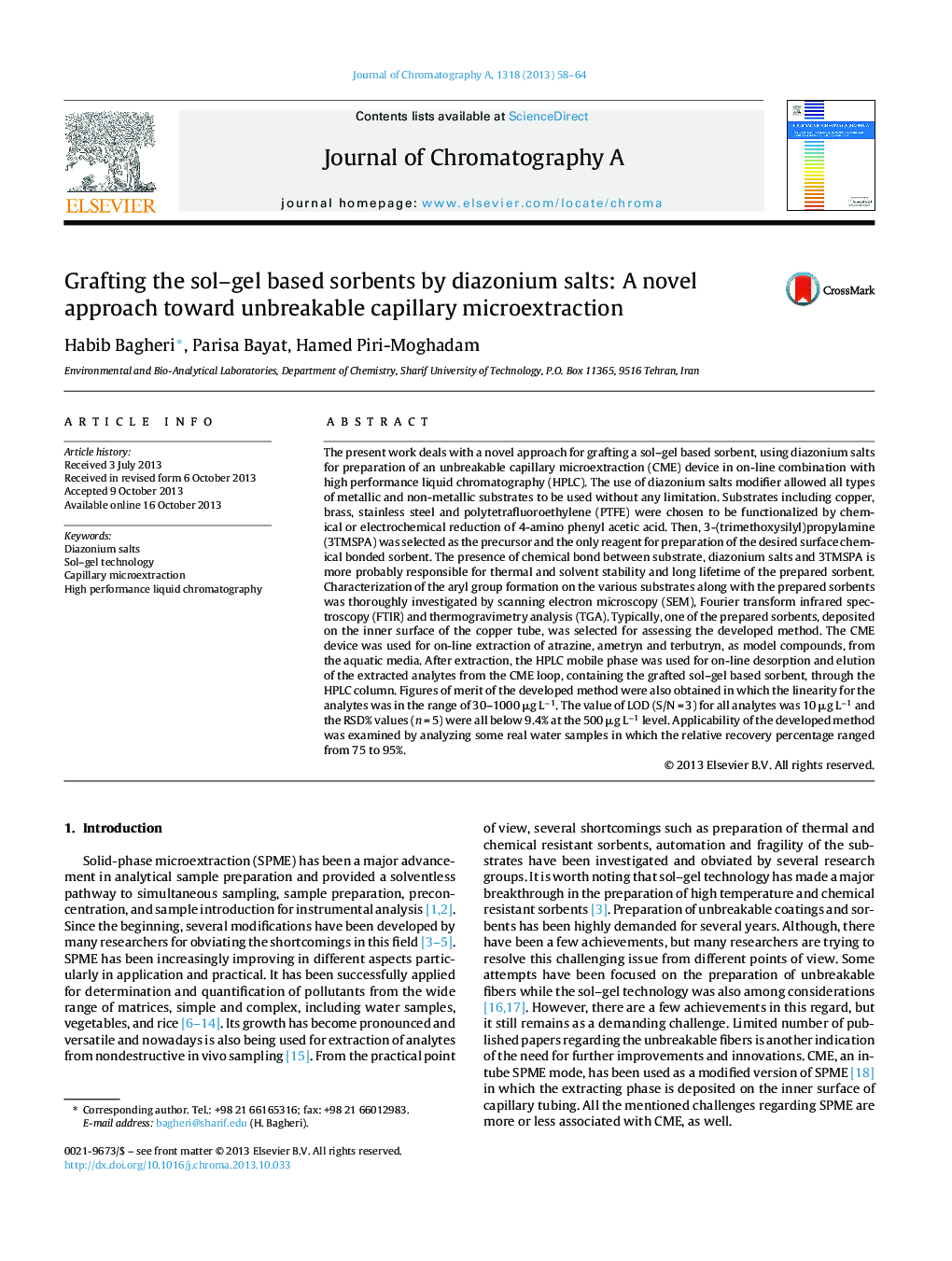| کد مقاله | کد نشریه | سال انتشار | مقاله انگلیسی | نسخه تمام متن |
|---|---|---|---|---|
| 1200841 | 1493608 | 2013 | 7 صفحه PDF | دانلود رایگان |

• A novel approach toward unbreakable capillary microextraction is developed.
• A sol–gel based sorbent is grafted by diazonium salts on various substrates.
• The use of diazonium salts modifier allowed all types of metallic and non-metallic substrates to be used.
• An on-line combination of capillary microextraction with HPLC was set-up.
The present work deals with a novel approach for grafting a sol–gel based sorbent, using diazonium salts for preparation of an unbreakable capillary microextraction (CME) device in on-line combination with high performance liquid chromatography (HPLC). The use of diazonium salts modifier allowed all types of metallic and non-metallic substrates to be used without any limitation. Substrates including copper, brass, stainless steel and polytetrafluoroethylene (PTFE) were chosen to be functionalized by chemical or electrochemical reduction of 4-amino phenyl acetic acid. Then, 3-(trimethoxysilyl)propylamine (3TMSPA) was selected as the precursor and the only reagent for preparation of the desired surface chemical bonded sorbent. The presence of chemical bond between substrate, diazonium salts and 3TMSPA is more probably responsible for thermal and solvent stability and long lifetime of the prepared sorbent. Characterization of the aryl group formation on the various substrates along with the prepared sorbents was thoroughly investigated by scanning electron microscopy (SEM), Fourier transform infrared spectroscopy (FTIR) and thermogravimetry analysis (TGA). Typically, one of the prepared sorbents, deposited on the inner surface of the copper tube, was selected for assessing the developed method. The CME device was used for on-line extraction of atrazine, ametryn and terbutryn, as model compounds, from the aquatic media. After extraction, the HPLC mobile phase was used for on-line desorption and elution of the extracted analytes from the CME loop, containing the grafted sol–gel based sorbent, through the HPLC column. Figures of merit of the developed method were also obtained in which the linearity for the analytes was in the range of 30–1000 μg L−1. The value of LOD (S/N = 3) for all analytes was 10 μg L−1 and the RSD% values (n = 5) were all below 9.4% at the 500 μg L−1 level. Applicability of the developed method was examined by analyzing some real water samples in which the relative recovery percentage ranged from 75 to 95%.
Journal: Journal of Chromatography A - Volume 1318, 29 November 2013, Pages 58–64